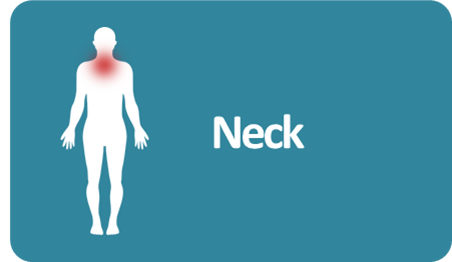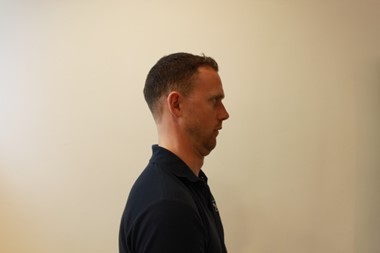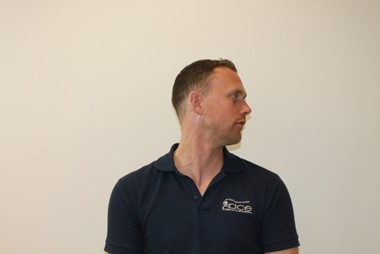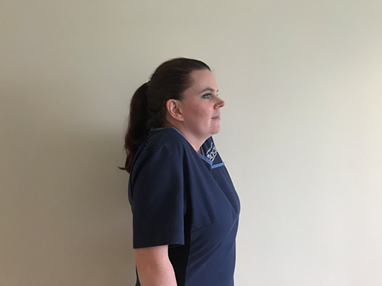Self help resources - Neck

Documents / Leaflets
Useful Sites
-
The following information has been written to help you fully self-manage your neck pain.
However, please self-refer straight away to be assessed by a Physiotherapist if you:
- have had recent trauma to your neck and have significant pain or loss of movement
- constant day & night neck pain (or pain referring to the head from your neck) that you cannot settle
- you are off-sick and struggling to return to work due to your pain
- You are experiencing constant pins & needles or numbness radiating down one or both of your arms
- You have other symptoms such as dizziness, problems speaking or swallowing, drop attacks (black-outs), nausea, visual disturbances or facial numbness
- your symptoms are worsening and are not improving despite following advice below over the course of the next six weeks
If you have a history of cancer, immunodeficiency or TB and have new, unexplained and constant pain then please speak to your GP whilst you attempt the following self-help advice.
What can I do to help?
Neck pain is common but most cases are not caused by a serious problem. The vast majority of cases of neck pain get better on their own within a few weeks. Simple self-help measures will often help to ease symptoms. If you are struggling with your pain, the following initial advice should help you to get started:
Pain relief: Basic painkillers (like paracetamol) or non-steroidal anti-inflammatory gels (such as Ibuleve/Voltarol) are easily available over the counter without the need for prescription. These can be very effective as they lessen your discomfort and importantly allow you to keep moving/active. However, please check the labels for instructions/safe usage and any possible reasons why you should not use them. If you are currently taking any form of medication it is advisable to consult your GP or Pharmacist before taking additional pain relief.
Relaxation: Tense muscles caused by anxiety and stress can increase the amount of discomfort you feel. You may find controlled breathing exercises and relaxation/mindfulness helpful.
Heat or Ice: Heat is often useful for easing pain using a hot water bottle or wheat pack. Use for 15-20 minutes at a time and repeat several times a day as necessary. However, if you have had a recent injury or flare up you may find it more therapeutic to use an ice pack to reduce your pain/irritation. A packet of frozen peas wrapped in a tea-towel works well. Leave in place for up to 15 minutes at a time. Again, this can be repeated several times a day if found helpful.
Sleep: Changing the number or position of pillows may be helpful. There is no one ‘correct’ position; choose whatever position given you most comfort.
Rest vs. activity: It is usually best to carry out your normal activities, but try not to overdo it. Let pain be your guide; short-lasting/temporary discomfort is fine but worsening or constant 24/7 pain indicates you are likely doing too much and need to take things a little easier. You need to pace yourself to start with and try to do a bit more each few days.
A short period of rest may be helpful but for no more than one to two days after an injury. As soon as possible start some gentle stretches and neck movements. It is best to avoid neck collars as this leads to your neck becoming stiffer and sorer. Do not drive until you have sufficient movement to be safe to do so.
Exercise
Exercise can be an extremely beneficial treatment for your neck pain as it can gradually build the tolerance and load-capacity of your tissues and help ease stiffness and soreness.
Repeat the following exercises several times a day. A small increase in pain is OK; you just need to work within your own tolerable pain levels. If you feel you have done too much and it is not tolerable, do not worry, do smaller movements next time and then gradually build up again. Aim to gradually increase the range of movement as your pain allows. It may take a few weeks before you start to see significant improvement.
For a printable version of these exercises please click here
If your neck does not start to improve over the next 6 weeks, or gets worse despite the exercises, then you can self-refer yourself to see a Physiotherapist for an assessment.
If you experience irritable neck pain with intermittent pins & needles or numbness into one of your arms; please refer to our separate ‘Neck and Arm Pain’ handout – available on our website.
Exercise 1 – Neck Retractions
Draw your chin in gently to make a double chin keeping your eyes looking straight ahead and feel the stretch in your neck.
Repeat 5-10 times

Exercise 2 – Neck Rotations
Turn your head to look over your shoulder to achieve a stretching feeling. Hold for 5 seconds. Avoid movements that elicit a painful pinching feeling that you find irritable.
Repeat 5-10 times

Exercise 3 – Side Bends
Tilt your head to one side whilst looking straight ahead. Hold for 5 seconds. Avoid movements that elicit a painful pinching feeling that you find irritable. You may want to just stretch away from the painful side only
Repeat 5-10 times

Exercise 4 – Shoulder Rolls
Roll your shoulders slowly taking them up, back and down as far as you can
Repeat 5-10 times
If you find this very easy, you can hold some light weights in your hands for a little added resistance (around 1-2kg to begin with and increase as able)
